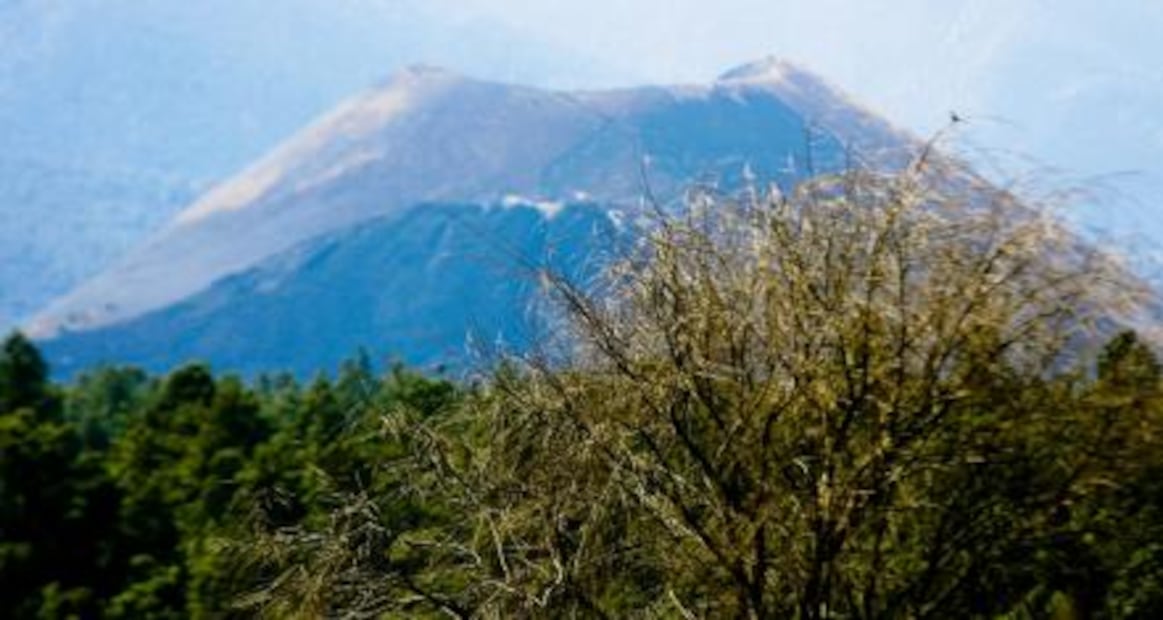They say that the land was bloodied with fury. An immense gray cloud threw stones, roared and steamed. The inhabitants of San Juan Parangaricutiro , Michoacán , believed that the end of the world had arrived. On February 20, 1943 , fire tongues embraced the darkness and Mexico saw the birth of the youngest volcano in the world, Paricutin .

Seventy-four years later, lava waves appear to be completely petrified. However, the earth still releases heat and vapor through its cracks, and the surroundings have a sulfur scent .
From the eastern side of Paricutín, near the " Zapicho 's" top, the smallest of the five sub-craters, the villages of Angahuan , Nuevo San Juan and San Salvador Combutzio or Caltzontzin can be seen.
Lava reached Angahuan in one year and three months, and Caltzontzin was founded by the inhabitants who escaped from the lava path.
Thirty minutes away from the volcano, by car or on horseback, there is the only thing that the eruption could not stomp, San Juan Parangaricutiro Church , a church buried amid lava.
Children or elderly people guide newcomers among the rock cemetery , show the photographs prior to the eruption and sometimes tell purépecha (a group of indigenous people centered in the northwestern region of Michoacán) stories about the birth of Paricutí since they consider the eruption a divine curse . The curse is thought to be derived from an argument that the towns of San Juan and Paricutín had over a cross that a priest placed in the middle of both towns causing the burying of the towns as a punishment.
Amid the petrified lava , the left tower and the bell tower of the church can be seen. Half the atrium survived and newcomers can walk through it, cross its arch and narrow path.
At the other end of the atrium, it survives an image of Christ, now renamed the Christ of Miracles , since lava stopped its way there. Ribbons, candles, and flowers decorate the place and now volcanic stones are the benches where people sit and kneel to pray.
sg
Noticias según tus intereses
[Publicidad]
[Publicidad]














